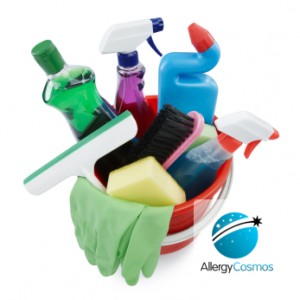How toxic is low-level exposure to household chemicals? The World Health Organization has issued a stark warning on the health effects that may be linked to exposure, including low-level exposure, to chemicals in the home and in the environment. The report ‘Global assessment of the state of the science of endocrine disruptors’ is a wide-ranging review of studies covering many different household chemicals and many different diseases. Some of the studies reviewed have been conducted on animals, some on humans and others are laboratory-based.
What harm do household chemicals do?
What household chemicals that give off endocrine disruptors have in common is their tendency to interfere with the biochemical functioning of hormones. Since hormones are the body's chemical messengers, anything that disrupts their normal action could, potentially, have a serious impact on the functioning of cells, tissues and organs, causing a wide range of disease.
There are hundreds of endocrine disruptor chemicals in everyday use and, the problem is, there has been little, or no, research on the health impact of many of them. This report could, therefore, represent just the tip of the iceberg as far as the health hazards of these household chemicals are concerned. The report does highlight three particular groups of endocrine disruptors, namely:
- Phthalates – which are plasticisers found in toys, floorings and plastic cards among many other products (though banned in cosmetics made in the EU).
- Bisphenols – used to line tin cans.
- Fire retardants – commonly used in furniture and textiles to improve their safety.
Endocrine disruptor molecules are shed from the products containing these chemicals and find their way into dust and onto surfaces, and from these sources into the body. Exposure builds up over a period of years. The report makes particular mention of how an increase in certain health problems, including asthma, low sperm counts and the incidence of certain cancers in the last two decades might be explained by the introduction of endocrine disruptors. However, it is careful to point out that although evidence for a link with ill health is stronger than was previously believed, no causal link has been shown.
In summary, the WHO report states:
'The diverse systems affected by endocrine-disrupting chemicals likely include all hormonal systems and range from those controlling development and function of reproductive organs to the tissues and organs regulating metabolism and satiety. Effects on these systems can lead to obesity, infertility or reduced fertility, learning and memory difficulties, adult-onset diabetes or cardiovascular disease, as well as a variety of other diseases.
It should be noted, however, that there are also naturally occurring endocrine disruptors such as the phyto-oestrogens found in many plant foods (soya, often promoted for its health benefits is an example). It is not being synthetic which makes a chemical dangerous – it is its molecular structure. Naturally occurring chemicals can also have molecular structures that confer a biological effect (such as hormone disruption).
What should be done? Legislation has been brought in over the years to control and even ban those endocrine disruptors in household chemicals for which the evidence of harm is very strong, such as DDT and polychlorinated biphenyls (PCBs). The European Union is considering extending legislation to cover a wider range of endocrine disruptors.
There is also a clear need for further research into the mechanism of action of endocrine disruptors in household chemicals on individual hormones and related biochemical systems and for good clinical studies on the link between exposure and different diseases.
And there are, of course, various self-help measures you can adopt. Check labels on plastics and DIY products. Be careful with kids toys, softer plastics are more likely to contain plasticisers, so go for harder versions if you can. And it is worth keeping dust levels down in the home by investing in an air purifier, doing the regular damp dusting and keeping down dust-attracting clutter.




